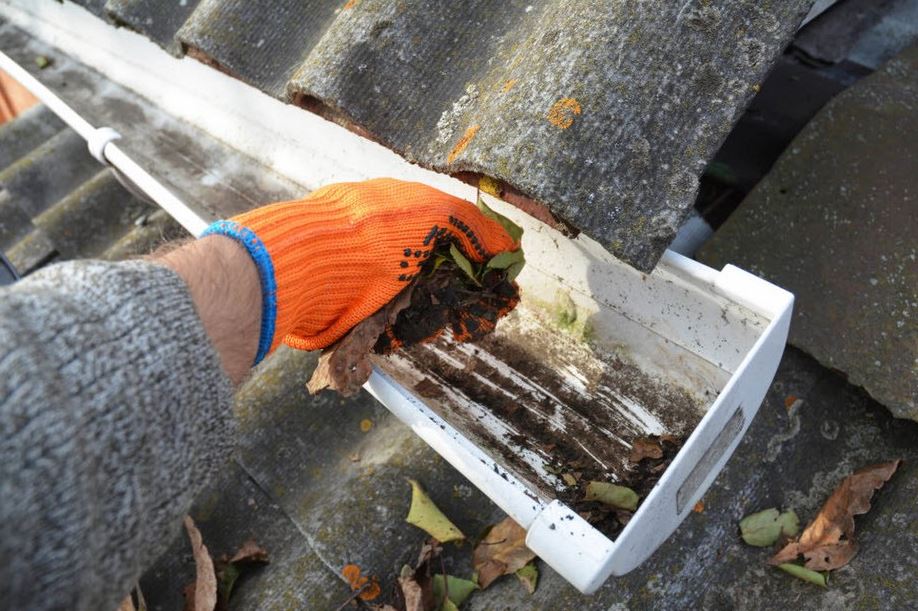At first glance, modern earnings from
Whirlpool and
Sherwin-Williams did not have considerably in popular, with the former reducing its outlook whilst the latter furnished powerful guidance.
Still hunting a lot more closely may possibly show that individuals continue to have an urge for food for dwelling improvement, though their spending is shifting.
Late Tuesday, Whirlpool (ticker: WHR) sent a blended very first quarter, and warned that the North American appliance industry won’t expand this year, a significantly far more conservative forecast than it had issued formerly, when it famous that the marketplace could climb as a lot as 3%.
Whirlpool received a boost for the duration of the pandemic as more individuals stayed at property, with the stock achieving all-time highs in the initially half of 2021. Even now it’s not astonishing that the organization sees a rockier street in advance. Shares are down 20.2% so far this calendar year.
People today don’t want to get extended-lived appliances really frequently—meaning that new washer they received during the initially lockdown is continue to heading solid. Whirlpool also is however working with increased enter expenditures, significantly rising metal prices, as perfectly as offer chain disruptions.
Whirlpool, like a lot of other corporations, have passed on a whole lot of individuals elevated charges to the consumer, as evidenced by the sturdy margins in its North American business enterprise in the first quarter. Nevertheless better charges may be the real sticking level, as individuals are placing off purchases they may perhaps need to finance in the encounter of mounting curiosity fees.
“Consumers are postponing huge ticket purchases like residence renovations and household furniture,” writes Jefferies’ analyst Jonathan Matuszewski, next his firm’s new survey of far more than 3,400 buyers. The conclusions discovered that 38% of respondents are ready to pull the result in on a lot more costly items “to minimize the impact of higher costs.”
That is a worry—and it dovetails with Whirlpool’s final results. Nevertheless, it’s not an overpowering majority of individuals, and it may well not be a widespread harbinger of more durable times for house improvement in general. Final 7 days, UBS analyst Michael Lasser satisfied with
Home Depot’s (Hd) administration team, together with its chief executive and chief economical officers, who “offered a confident and upbeat tone.”
Lasser highlighted that House Depot “hasn’t noticed proof of a drop off in significant ticket items or shoppers investing down” and that it hasn’t found buyers pulling back like they did in former recessions. “In 2000, Dwelling Depot witnessed that buyers traded down to additional opening selling price factors,” he extra. “During the recession in the 2007-2008 time period, the company noticed a sizable fall in huge ticket.”
On a brighter notice, this early morning Sherwin-Williams’ (SHW) initially quarter came in ahead of expectations, as did its reaffirmed complete-year assistance.
Sherwin-Williams’ do-it-by yourself enterprise saw a drop in similar gross sales, whilst that was from significantly higher calendar year-in the past concentrations, even though its professional corporations all confirmed improves. The company noted that price tag improves it has enacted should really aid to simplicity margin strain, but that shouldn’t weigh as well greatly on desire, given its strong outlook. The stock is down about 23% this 12 months.
In addition, Sherwin-Williams reported that it is observing enhanced availability of uncooked components. With prior shortages it experienced prioritized professional shoppers, so easing constraints is very good news, given that it could absolutely free up more merchandise for individuals, “which must facilitate quantity recovery in a solid demand from customers surroundings,” writes CFRA analyst Richard Wolfe.
The reality that Sherwin-Williams is even now upbeat about the calendar year may possibly indicate that while people are chopping again thanks to document inflation, they aren’t totally forgoing home improvement, alternatively focusing on significantly less pricey jobs.
The company cited toughness in its architectural and industrial end marketplaces, but its Americas business—Sherwin-Williams’ most significant division which accounts for additional than half of sales—includes vital types like house routine maintenance, new residential structures and residential repaint. Hence its robust forecast is a beneficial signal for property shelling out. Certainly, in its push launch, Sherwin-Williams mentioned that “backlogs continue being strong” in its Americas business enterprise.
Earlier this month, Barron’s argued that home-enhancement merchants had fallen also significantly, specified that there are aspects that can spur shoppers to maintain improving their living areas even if the housing current market ultimately starts to cool. The latest commentary from Sherwin-Williams and Dwelling Depot’s executive workforce echoes that sentiment.
Even though it can make perception for investors to be fairly cautious about housing in the experience of climbing fascination costs and escalating unaffordability, that doesn’t necessarily suggest that dwelling advancement will fall in tandem.
In addition, any easing of inflation could guide to buyers paying out once again as “delayed spend is unique from forgone spend,” Matuszewski writes. “Home price tag appreciation will lessen the effects on house-enhancement outlays.”
Even if a postpandemic The united states indicates we’re household staring at the partitions significantly less frequently, there is even now a great deal of purpose to continue to keep them hunting fresh new.
Write to Teresa Rivas at [email protected]



More Stories
Winter Pests 101: Identify and Prevent the Season’s Most Common Invaders
How to Choose the Right Gutter Cleaning Company for Your Home
Understanding Comprehensive Oral Care: Strategies for Achieving and Maintaining Peak Oral Health